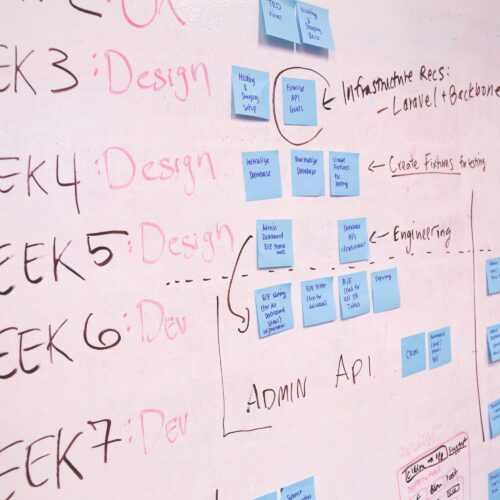Terra AS is a company with 80 employees, located in Stavanger. The company has specialized in geological investigations. The operations include both field investigations and laboratory work. In the market, the company is known for high-quality work. It is also known for charging a high price for its services, and it is not particularly good at meeting given deadlines.

This was not a problem as long as the market was robust and competition relatively small. However, the situation changed dramatically within a couple of years. Several competitors were established with geological expertise as high as that in Terra AS. At the same time, parts of the market collapsed. For the company’s management, it was clear that something had to be done.
In contrast to its competitors, Terra AS had a rock-solid economy. This was due to two factors. First, the company had been very profitable for several years. Second, the owners had not taken out dividends, but let the surplus remain in the company. The result was a debt-free company with several millions in various funds, securities, and bank deposits. The company therefore had the economy to both handle moderate deficits and to carry out major changes, both in the technological and administrative areas.
The board of Terra AS decided to use some of these reserves to strengthen future competitiveness. They hired a reputable consulting firm to review the company’s operations. The report from the consultants concluded that the company was strong in the technological area, but there was considerable room for improvement in the administrative and organizational area. As one measure, the consultants suggested implementing a new electronic document management system. The board agreed with this. This could contribute to a better exchange of documents and information with clients, something that had been pointed out several times.
Following a market survey, the board decided to engage the company IT Soft AS to develop and implement the necessary software, and to establish the necessary routines and procedures to achieve better document management in the projects. IT Soft AS is a relatively small Stavanger-based company (50 employees) specializing in IT systems for document management. Due to this new assignment with Terra AS, the company hired two new graduates – Hans Pedersen, a civil engineer, and Karen Olsen, a diploma economist specializing in IT. Both Hans and Karen were engaged in the project at Terra AS from day one.
To ensure a successful project, the board of Terra AS wanted IT Soft AS to create a list of the biggest challenges that these types of projects generally face. They believed this would be useful to ensure the right focus.
Discuss what you believe are the five biggest challenges in this project for it to be successful.
The five biggest challenges in the project to ensure success could be:
- Technical Complexity: The implementation of a new electronic document management system can be technically complex and require advanced IT skills. It’s crucial to ensure that the system is stable, secure, and seamlessly integrates with existing infrastructure and software.
- Change Management and Acceptance: The introduction of a new system will involve changes in work processes and routines for the employees at Terra AS. Resistance to change and lack of acceptance for the new system could pose a significant challenge. It is important to have a clear communication and change strategy, including training and support for the employees, to ensure they become comfortable with the new system.
- Project Management and Coordination: The project involves multiple disciplines, such as development, testing, and implementation. Coordinating these activities could be challenging, especially in terms of resource allocation, time management, and communication among team members. Effective project management is crucial to ensure the project stays on track and any obstacles are proactively addressed.
- Cost Overruns and Schedule Deviations: A common problem in projects is exceeding budgets and schedule delays. Terra AS has previously had issues with meeting deadlines, and it’s important to ensure that the project has sufficient resources and that realistic timelines are set. A thorough cost estimation and risk assessment should be conducted, and there should be a robust monitoring and control mechanism to identify and manage any cost overruns or schedule deviations early.
- Interaction and Communication: Terra AS is a company with 80 employees, and it can be challenging to ensure good interaction and communication among the various departments and the project team. Lack of communication and misunderstandings can lead to inefficiencies, delays, and quality issues. It’s important to establish clear channels for communication and collaboration, both internally within the project team and externally with the client, Terra AS. Regular meetings, reporting, and updates can help ensure a smooth flow of information and cooperation.
After a week, the project work at IT Soft AS is well underway. Knut Smesrud has been appointed as the project leader. After thorough calculations of the work scope based on known estimation techniques, Knut has concluded that he needs: one secretary, six development staff, three test staff, and three implementation staff for the execution of the project. Except for Knut, all these employees will work part-time on the project as needed.
Knut is aware that this form of organization (matrix) is complex and difficult. Some have gone as far as calling this structure a “managed” conflict between the project and the base organization. Discuss what measures you believe Knut should ensure so that the matrix as an organizational structure works in the best possible way, and so that he as project manager has the necessary authority.
To ensure that the matrix as an organizational structure functions in the best possible way and for Knut to have the necessary authority as a project manager, the following measures should be considered:
- Clear role and responsibility distribution: It’s important to establish a clear role and responsibility distribution between the project and the base organization. This involves defining clear boundaries for what the project is responsible for, and what lies under the responsibility of the base organization. This helps to avoid conflicts and ambiguities in decision-making processes and authority.
- Clear communication and expectation clarification: Knut should actively communicate with both the project team and the base organization to clarify the project’s objectives, scope, resources, and requirements. This ensures that all those involved understand the purpose of the project and what is expected of them. Regular meetings, reporting, and updates are crucial to keep all parties informed and involved.
- Support from management: Knut should seek support and affirmation from the management, both in the project and in the base organization. This includes highlighting the project’s importance and utility to the organization as a whole. When the management gives its support, it becomes easier for Knut to exert necessary authority and make decisions in the project’s best interest.
- Development of interpersonal skills: Knut should develop strong interpersonal skills to handle any conflicts and challenges in the matrix structure. This includes the ability to listen, communicate effectively, build relationships, and solve problems in a constructive manner. Establishing trust and respect among team members and other stakeholders is crucial to create a positive working environment and ensure collaboration.
- Building competence and trust: Knut should actively work on building competence in project management and document management. This includes staying updated on best practices, participating in relevant training and development, and being a resource person for the team. By demonstrating knowledge and competence, Knut can gain trust and respect from both the project team and the base organization, which in turn strengthens his authority as project manager.
By implementing these measures, Knut can help minimize conflicts and ensure an effectively functioning matrix structure, while gaining the necessary authority as project manager.
This case is taken from the book “Prosjektledelse – fra initiering til gevinstrealisering” – 2016, 4. Edition, by Jan Terje Karlsen.




